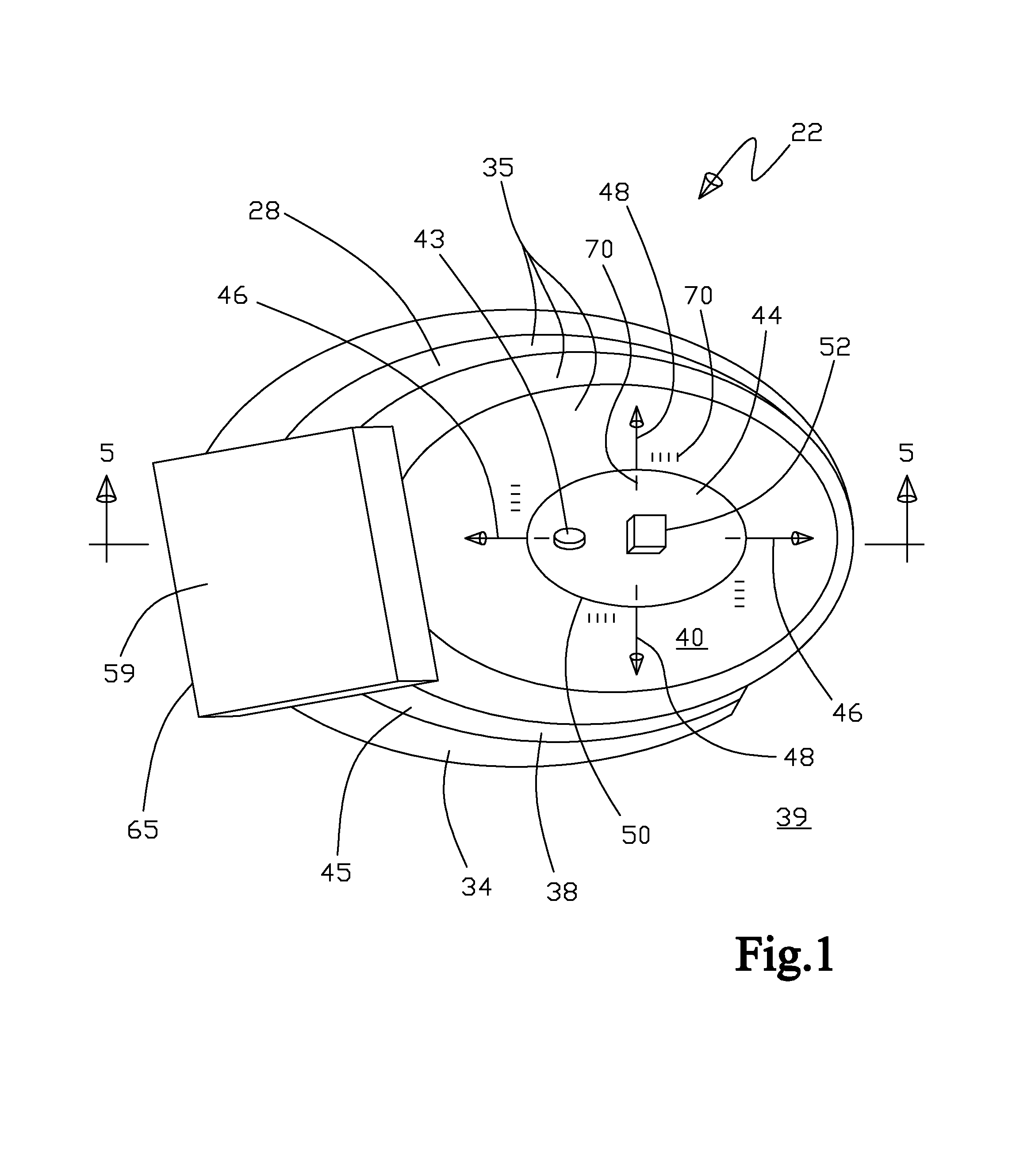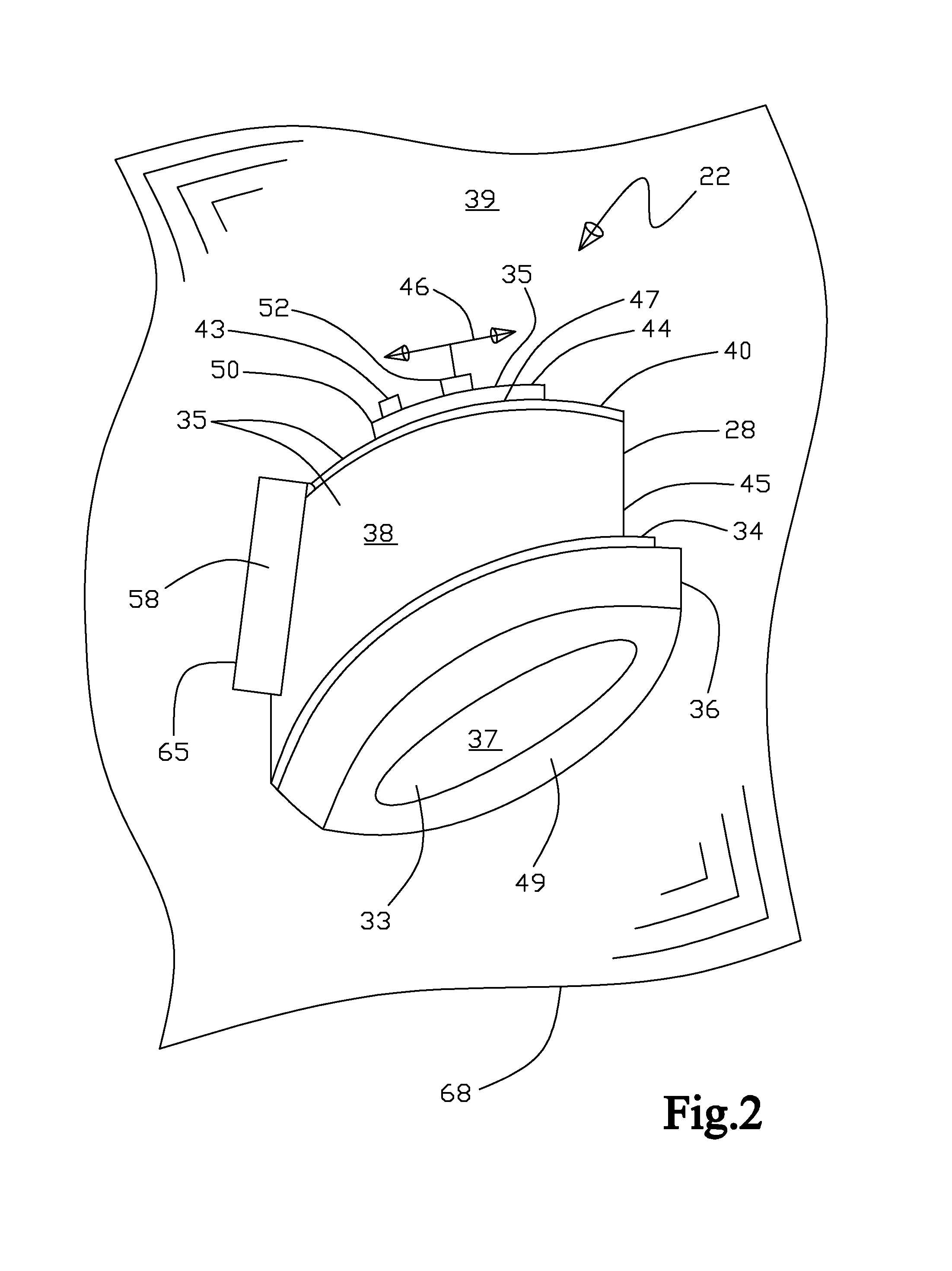Eye target apparatus
a target apparatus and eye technology, applied in the field of eye target apparatus, can solve the problems of eye surgery more difficult, eye movement uncontrollable, additional medical complications,
- Summary
- Abstract
- Description
- Claims
- Application Information
AI Technical Summary
Benefits of technology
Problems solved by technology
Method used
Image
Examples
Embodiment Construction
[0084]With initial reference to FIGS. 1-11, the eye target apparatus 22 and the alternative embodiment of the eye target apparatus 23 are generally described, as an eye target apparatus 22 and the alternative embodiment of the eye target apparatus 23 being for use in helping to control an operative eye 72 focus line of sight axis 74 position during medical procedures on the operative eye 72. With FIG. 1 showing a perspective view of the eye target apparatus 22 as viewed from the side opposite of the non operative eye 24 side. FIG. 2 shows a perspective view of the eye target apparatus 22 as viewed from a side elevation and FIG. 3 shows a view of the eye target apparatus 22 as viewed from the non operative eye 24 side. Further, FIG. 4 shows an exploded perspective view of the eye target apparatus 22 as viewed from a side elevation and FIG. 5 shows cross-sectional view 5-5 from FIG. 1 of the eye target apparatus 22 in use placed upon a patient's 78 facial contour 27 over the non opera...
PUM
 Login to View More
Login to View More Abstract
Description
Claims
Application Information
 Login to View More
Login to View More - R&D
- Intellectual Property
- Life Sciences
- Materials
- Tech Scout
- Unparalleled Data Quality
- Higher Quality Content
- 60% Fewer Hallucinations
Browse by: Latest US Patents, China's latest patents, Technical Efficacy Thesaurus, Application Domain, Technology Topic, Popular Technical Reports.
© 2025 PatSnap. All rights reserved.Legal|Privacy policy|Modern Slavery Act Transparency Statement|Sitemap|About US| Contact US: help@patsnap.com



